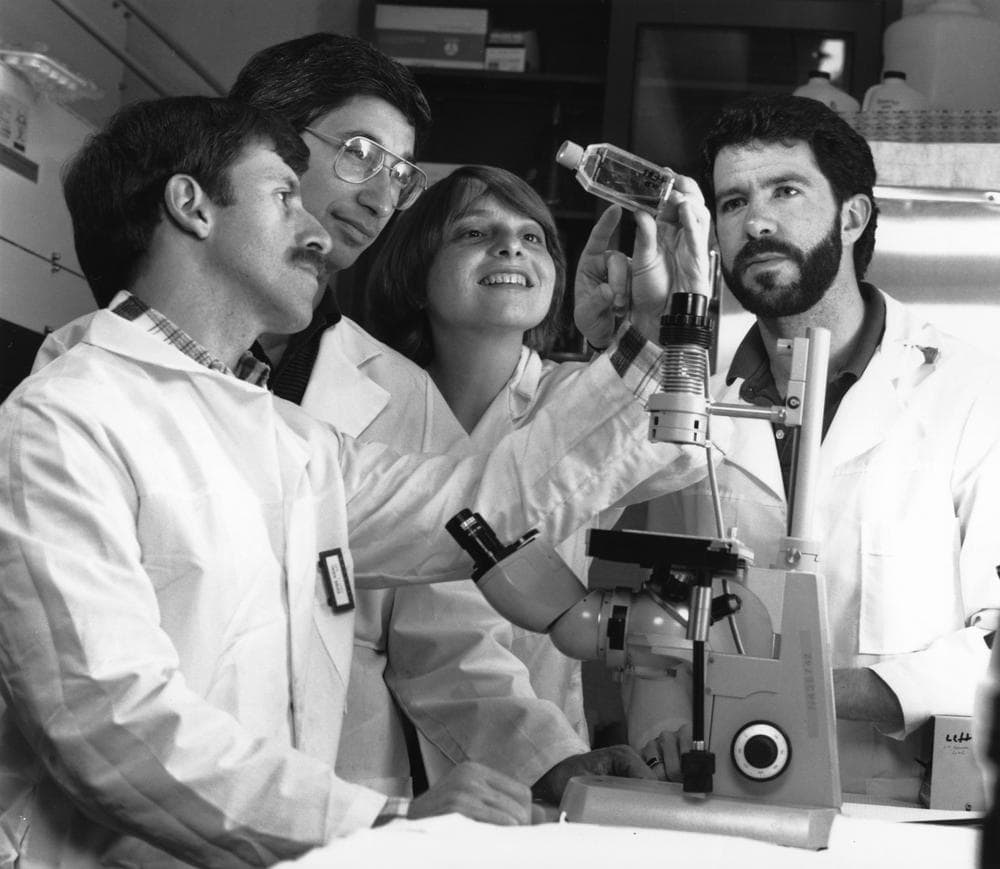Advertisement
'Scientists At Risk': Cuts Threaten Boston's Biomed Research Edge
“Abundance” has always been a choice word in describing the volume of federal funds fueling biomedical research in Boston. However, local researchers won't be spared from the effects of sequestration, the automatic budget cuts that became law in January.
Federal cuts include National Institutes of Health research grants that have been a central source of funding for biomedical research efforts across the country. Boston, as a top recipient of the NIH's largesse, will be hit particularly hard.

WBUR's Bruce Gellerman spoke with Dr. Piyush Gupta, a researcher at MIT’s Whitehead Institute for Biomedical Research in Cambridge about the NIH cuts:
More than 30,000 people in Massachusetts work directly in biomedical research. Gupta says that’s due, in large part, to the grants researchers here get from the National Institutes of Health.
“The NIH is the source of funding that sustains laboratory research — the primary source of funding throughout the country,” he said.
For 18 consecutive years, Boston has led the nation among all U.S. cities in the amount of funding from the NIH. Money for biomedical research here last year reached a near record. But the federal sequester calls for cutting the NIH budget by 5 percent, and more over the coming decade.
Massachusetts got $2.3 billion from the NIH last year. That works out to $377 per person. California was a distant second, with $90 per person. And if you look at just Cambridge and Boston, it’s a whopping $3,000 a person.
Veteran biomedical researchers like Dr. Gupta fear that the growing scarcity in federal funds will lead to a more competitive environment and quash the collaborative ethos that currently exists.
He says at the same time, countries like Japan and China are significantly increasing federal funds dedicated to scientific research, perhaps making their labs more attractive for young scientists.
Gupta says that’s helped create not only a critical mass of money, but also a community of world class scientific talent.
“It happens all the time in science, where you’re grappling with a problem and you enter slightly unknown territory that someone else, down the hall, is an expert in,” Gupta said. “It’s because collaboration is in the DNA of researchers today.”
But that’s changing. While collaboration is still the cornerstone of biomedical science, today competition is the watch word as federal funding shrinks.
“My fear is that we’re putting an entire generation of U.S. scientists at risk,” said Dr. Francis Collins, the head of the National Institutes of Health. “If they go away, they won’t come back.”
Today a researcher’s chance of getting a NIH grant is the lowest in the agency’s history — just 1 in 10 will get funded.
With the NIH cuts in effect, biomedical labs will have to look for research dollars elsewhere. This means more time spent on grant writing with greater uncertainty of securing funds.
For more doom and gloom, listen to WBUR's Tom Ashbrook today, on how these deep cuts to basic science may further undermine America's competitiveness in the future.
This program aired on May 28, 2013. The audio for this program is not available.